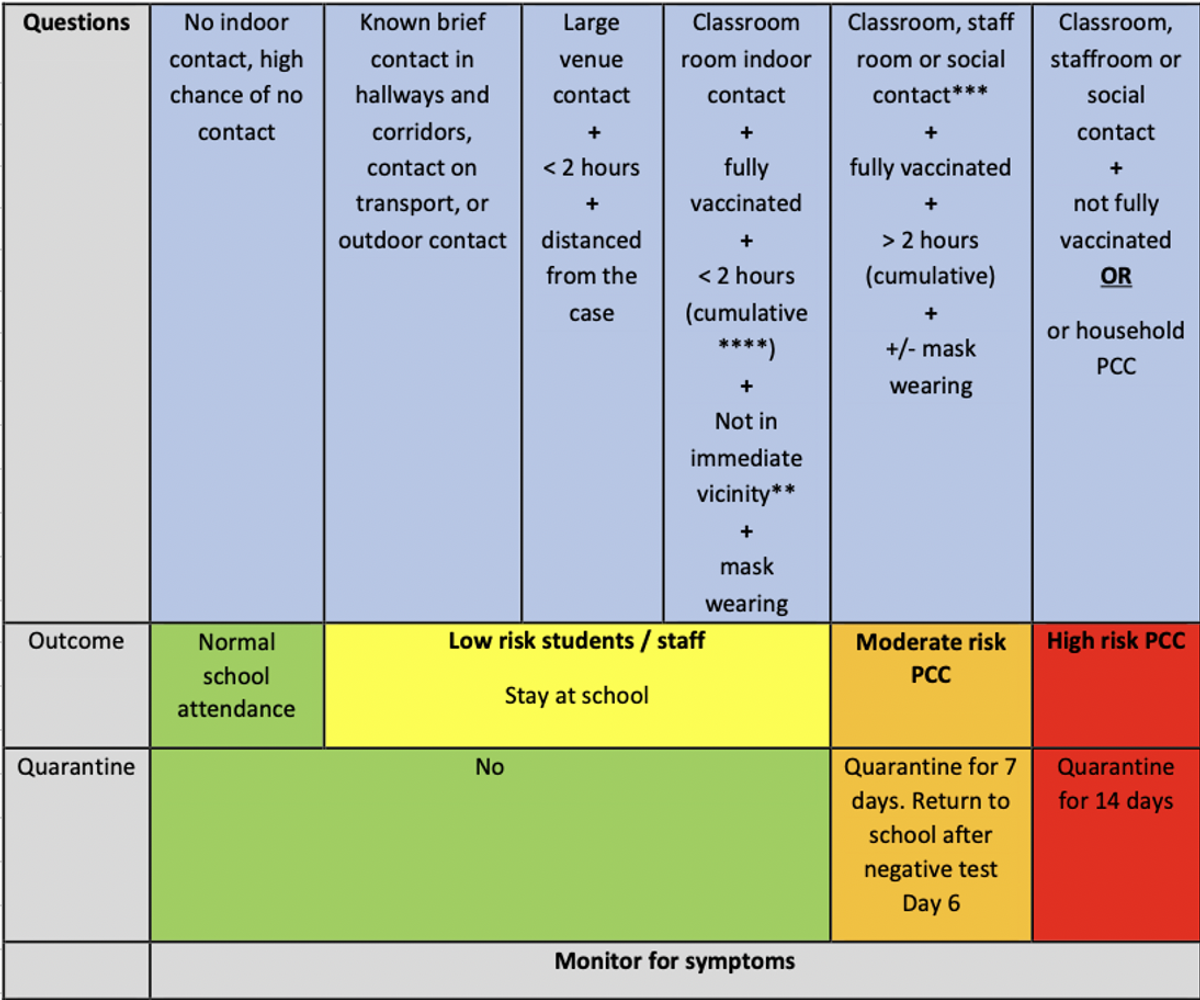COVID-19

Staying COVIDSafe at CNPS
Experiencing confirmed cases of COVID19 onsite has provided us with a greater knowledge of the process of determining who is a Primary Close Contact (PCC). The rules and processes are everchanging and changed a number of times whilst we had staff and students in quarantine. Here are the most current guidelines for determining PCCs:
Primary close contact (PCC) = spent 2 hours or more in cumulative total contact in the same room as a confirmed case of coronavirus (COVID-19). In primary schools this is likely to be the whole class. In secondary schools it is likely to include any student that did two subjects with the case on the same day over the infectious period.
High risk = unvaccinated
The infectious period = taken to include 48 hours prior to onset of symptoms - or 48 hours prior to date test taken if asymptomatic.
Vaccinated = two shots of the vaccine (from the day of their second dose) Evidence such as a screenshot of their certificate or vaccination card should be sighted.
If unvaccinated (i.e. all primary school students) they will be considered high risk and be asked to limit movements for 14 days and provide evidence of a negative day 13 test on their return to school. Their family members do not have to limit movements.
If vaccinated they will be considered medium risk and be asked to limit their movements for 7 days and provide evidence of a negative day 6 test on their return to school. Their families do not have to limit their movements.
These instructions assume a high degree of face-mask compliance for eligible year levels.
Risk Matrix for contact assessment
*Physically separated by distance from the case, with minimal contact in a large venue such as in a large well-ventilated room for events like Assembly.
**immediate vicinity = <1.5m, face to face, or next desk, sitting next to, adjacent seating, standing next to each other.
***Non-household social contact only e.g. people who do not live in the same housing as the student or staff. E.g. close contact outside the classroom, such as face-to-face less than 1.5m and greater than 15 minutes and with no mask.
***Non-household social contact only e.g. people who do not live in the same housing as the student or staff. E.g. close contact outside the classroom, such as face-to-face less than 1.5m and greater than 15 minutes and with no mask.
****Cumulative contact need not be consecutive periods of time over 48 hours. E.g. 4 half
hour blocks over 48 hours.
Masks
For all school settings, the Victorian Chief Health Officer:
- Directs school staff and secondary school students to wear a face mask indoors at school, including Outside School Hours Care (OSHC) programs, unless a lawful exception applies.
- Directs primary school students in Year 3 and above to wear a face mask indoors at school, including Outside School Hours Care (OSHC) programs, unless a lawful exception applies.
- Directs school staff and students aged 12 or older must always wear a face mask when travelling to and from school on public transport, taxis or ride share vehicles.
- Directs school staff to wear a face mask while teaching wherever practicable, except where removal of a face mask is necessary for effective communication.
- Strongly recommends students in Prep to Grade 2 to wear a face mask indoors at school or OSHC program.
- Strongly recommends school students aged under 12 to wear a face mask when travelling to and from school on public transport, taxis or ride share vehicles.
There are a number of lawful reasons for not wearing a face mask, including for staff and students who are unable to wear a face mask due to the nature of their disability, medical or a mental health condition. Parent/carers of a student/s who meet the criteria for an exception should provide their approval in writing for their child/ren to not wear a mask to the school.
Outside of lawful exceptions, schools should treat any deliberate and persistent non-compliance with the face masks direction as a serious matter. Usual school procedures for dealing with non-compliance with school rules should be followed.
Additional advice and support are available from Community Liaison Officers and Senior Education Improvement Leaders.
A face mask must cover the nose and mouth. Face shields, scarves or bandanas do not meet these requirements.

